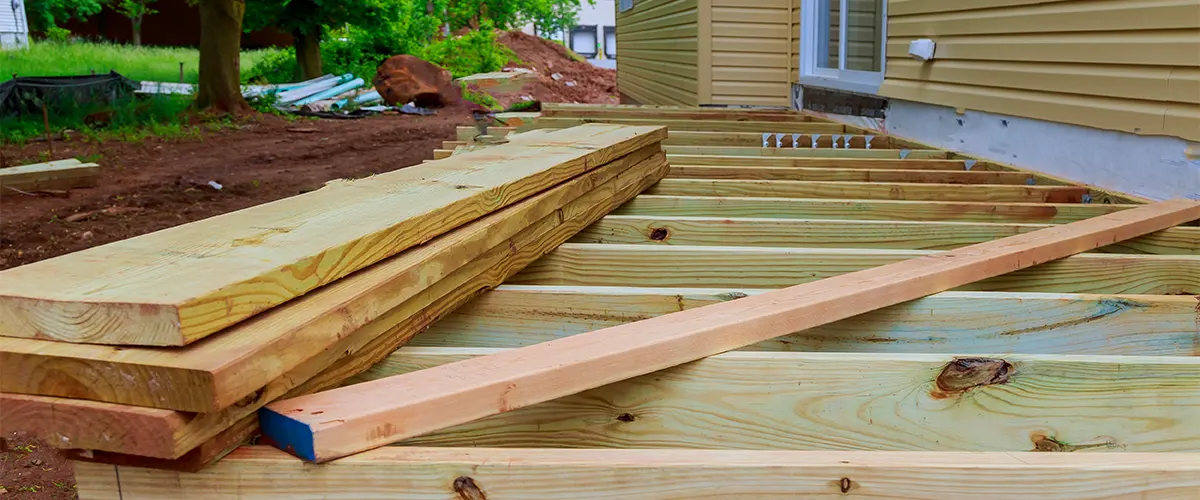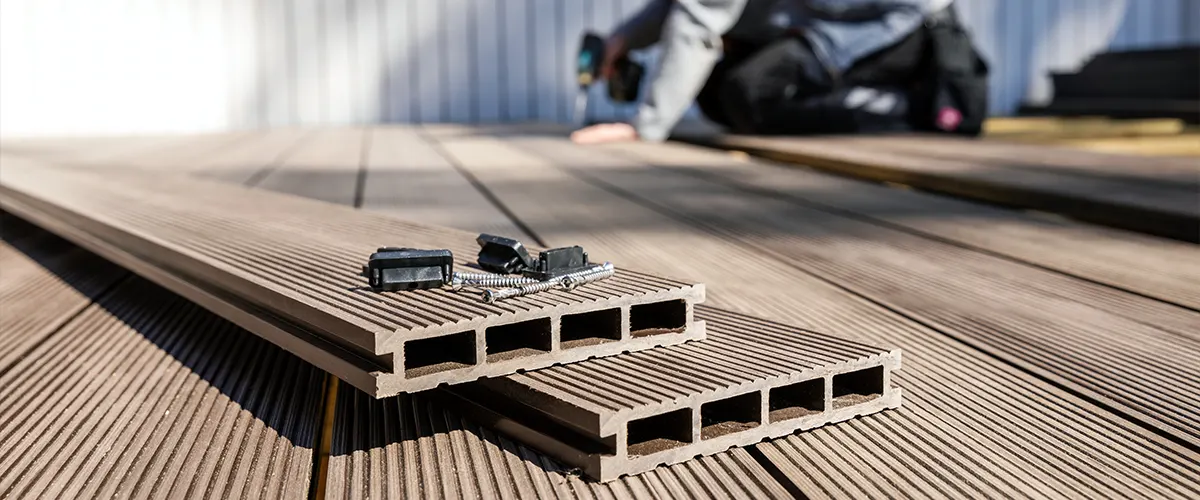Building a deck is a great way to add outdoor living space to your home. It can be a fun project for the entire family, and it’s sure to add value to your property.
However, before you get started, there are some things you need to know about deck construction.
This blog post will discuss deck blocking and bridging, two essential elements of any deck. We’ll explain what they are and why they’re important, and we’ll provide tips on how to install them correctly.
If you’re curious about how blocking and bridging work and why this is such a crucial part of any decking project, keep on reading!

What Is Deck Blocking?
Deck blocking is the practice of attaching a wooden block to the deck’s rim joist.
This block provides an attachment point for the ledger board, which helps to ensure that the deck is properly secured to the house.
The purpose of deck blocking is to provide a secure anchor point for the ledger board. The ledger board is the wood that attaches the deck to the house, and it must be securely attached.
If the ledger board isn’t attached properly, the deck could collapse, leading to serious injuries.
The blocks provide a solid foundation for the ledger board and help ensure the deck is attached to the house.
What Is Deck Bridging?
Bridging refers to using lumber (usually 2×4’s) to attach the rim joists on all sides. While some decks are constructed without bridging, it’s not recommended for new construction because it creates a weak point in the deck’s structure.
Decks without bridging are more likely to sag, leading to stability issues on the deck floor. This instability creates trip hazards and makes your deck less safe for family members and guests.
Furthermore, decks without bridging are often subject to damage from rot since there aren’t any connecting points between the rim joists to prevent moisture from entering.
Consider using bridging when building your deck if you’re building a deck. It will ensure that the deck is sturdy and secure, giving guests and family members a sense of security.

Spacing For Deck Blocking And Bridging?
It depends on which type of lumber you’re using. Most lumber manufacturers recommend that the blocking between the floor joists be placed every 2 feet.
For example, if your deck has 8-foot-long joists, you will want to add a piece of blocking every 2 feet: at 6 feet and 10 feet. These standards ensure your floor joist blocking is safe and up to every standard.
A 1×4 piece of lumber is ideal for blocking, but some manufacturers may recommend a 2×4 instead. While this means that the joist blocking spacing could be further apart (up to 4 feet), this practice is not great. It would make the deck less sturdy and create spacious gaps between joists left without blocking.
For bridging, the ideal spacing is also two feet between joists. To install it properly, attach 2×4’s to all sides of each rim joist on the deck. This helps support the flooring and ensures your deck is sturdy enough to hold a lot more people.
Connecting Joists
Strapping
Strapping uses 1×3 or bigger boards across the underside of joists every 4 to 6 feet from joist to joist, with the strap attached to the bottom.
The straps hold the spacing and provide limited resistance to joist rotation or flexing. They are easy to install during or after construction. However, they are horizontal and tend to hold dirt, moisture, nests, and rots out easily.
Blocking
Blocking is short lengths of solid blocks cut from joist material and attached between joists. Not as quick or easy to install as strapping, they provide significantly more structural support.
Often installed during construction in an alternating or straight line between joists, they disappear under a single deck. The slender vertical profile also sheds moisture better and lasts longer.
Cross Bracing
Cross bracing deck joists are done using 2×2 material mitered at each end and fastened to form an X between joists. Cross bracing joists better distribute the top load from one joist to the bottom of adjacent joists.
Cutting and installing cross joist braces is time-consuming, requires additional material, and the ends frequently split during fastening, so they need to be replaced. Predrilling helps but takes even more time.
Deck Joist Blocking Methods

Full Depth Solid Deck Blocking
Diagonal Cross Bracing
The use of diagonal bracing is more expensive than cross-bracing because it requires two 2x2s at each end to form an X between all joists.
Additionally, installing this type causes the wood members above and below these braces to split when fastened into place. It makes them easier for termites or other insects to crawl through cracks, damaging the wood.
Alternating
Nail or Screw Deck Blocking?
- 10d nails are commonly used to fasten deck blocking. Nails have greater strength, while screws have a greater pulling and holding ability.
- Professional builders use special screws to pull twisted joists against the blocks and prevent squeaks.
- Standard screws or deck screws are not recommended for structural use as they can easily snap under pressure.
- Nail guns are often used by builders, especially between joists. In really tight spots, a palm hammer is helpful. Use 2-1/2" spiral or ringed nails to prevent nail movement or squeaks.

Deck Blocking for Rail Posts
Railing posts fasten to the inside or outside of the rim or end joists.
Posts mounted inside are usually boxed with blocking cut from joist dimension material and fastened to parallel joists.
The blocks form a sleeve for the post and provide additional fastening surfaces for bolts. Blocking posts improve their stability and help transfer forces against the railings away from the rim or band joists.
Treatment
Conclusion
Deck blocking is an essential step in the construction of a safe structure.
If you are looking to build a deck, it is best to leave this process to the professionals. Making a structure safe and sound is not an easy task, and without serious carpentry experience, you should not go head-on with this project.
By working with an expert from DeckBros, your deck will be properly blocked and will be safe to host the most memorable family gatherings and parties.
Get in touch with us today and let us build you the perfect deck for you and your loved ones.

